
JOURNAL OF STATISTICAL MECHANICS-THEORY AND EXPERIMENT
Scope & Guideline
Bridging Theory and Practice in Statistical Research
Introduction
Aims and Scopes
- Statistical Mechanics Theories:
The journal publishes papers on the latest theoretical advances in statistical mechanics, addressing fundamental concepts like phase transitions, critical phenomena, and nonequilibrium dynamics. - Experimental Applications:
Research that applies statistical mechanics theories to experimental setups is a key focus, including studies on materials, biological systems, and complex networks. - Interdisciplinary Approaches:
The journal encourages submissions that integrate statistical mechanics with fields such as biology, economics, and social sciences, reflecting the broad applicability of its principles. - Numerical Simulations and Computational Methods:
Papers employing numerical methods and computational simulations to explore statistical mechanics phenomena are prominently featured, advancing the understanding of complex systems. - Emergence and Collective Behavior:
Research exploring emergent phenomena and collective behaviors in systems of interacting particles or agents is a significant area of contribution, providing insights into complex dynamics.
Trending and Emerging
- Stochastic Processes and Resetting Dynamics:
A significant increase in research on stochastic processes, particularly those involving resetting dynamics, indicates a growing interest in understanding how systems return to equilibrium or explore phase space. - Machine Learning Integration:
The integration of machine learning techniques into statistical mechanics research is emerging as a vital theme, with applications in data analysis, modeling, and predicting complex system behaviors. - Non-equilibrium Statistical Mechanics:
Research focusing on non-equilibrium phenomena, including active matter and driven systems, is gaining momentum, reflecting the need to understand systems far from equilibrium. - Biological and Social Systems Modeling:
There is a rising trend in modeling biological and social systems using statistical mechanics principles, highlighting the relevance of these theories in interdisciplinary research. - Quantum Statistical Mechanics:
An increase in studies related to quantum systems and their statistical mechanics, particularly in the context of quantum information and entanglement, signifies an emerging frontier in the journal's scope.
Declining or Waning
- Classical Statistical Models:
There has been a noticeable reduction in papers focusing solely on classical statistical models without incorporating modern computational techniques or interdisciplinary approaches. - Deterministic Dynamics:
Research centered on purely deterministic models has waned, with a growing emphasis on stochastic processes and their applications in real-world systems. - Basic Theoretical Frameworks:
Submissions that merely reiterate well-established theoretical frameworks without novel insights or applications have decreased, as the journal seeks to publish more innovative and impactful research. - Static Systems Analysis:
As the focus shifts towards dynamic systems and time-dependent phenomena, studies concentrating solely on static properties of systems are becoming less common.
Similar Journals

Annual Review of Condensed Matter Physics
Illuminating the Dynamics of Matter at the Molecular LevelThe Annual Review of Condensed Matter Physics, published by Annual Reviews, is a leading journal dedicated to advancing understanding in the field of condensed matter physics and materials science. With an impact factor that reflects its esteemed position—ranking in the top quartile (Q1) across both condensed matter physics and miscellaneous materials science categories—this journal serves as a crucial resource for researchers and professionals seeking the latest insights and comprehensive reviews in these dynamic areas of study. The journal spans an impressive range of topics from theoretical developments to applied research, aiming to create a rich dialogue among academia and industry. With consistent publication from 2010 to 2024, it curates high-quality, peer-reviewed articles that set a benchmark for excellence in the scientific community. Engaging both established professionals and emerging scholars, the Annual Review of Condensed Matter Physics is pivotal in shaping the discourse and fostering innovation in condensed matter research.
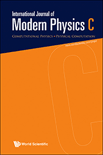
INTERNATIONAL JOURNAL OF MODERN PHYSICS C
Pioneering Research in Statistical Physics and BeyondINTERNATIONAL JOURNAL OF MODERN PHYSICS C, published by WORLD SCIENTIFIC PUBL CO PTE LTD, is a pivotal platform for disseminating groundbreaking research in the fields of computational theory, mathematical physics, and statistical physics. With an ISSN of 0129-1831 and an E-ISSN of 1793-6586, this esteemed journal, based in Singapore, serves a global audience of researchers and professionals who are dedicated to pushing the boundaries of knowledge in modern physics. The journal's rigorous selection process ensures the inclusion of high-quality articles that advance the understanding and application of complex theoretical concepts. Currently, the journal holds a commendable Q3 quartile ranking across several categories, including Computational Theory and Mathematics and Statistical and Nonlinear Physics, reflecting its influence and relevance in the academic community. Covering a wide array of topics from 1996 to 2024, the INTERNATIONAL JOURNAL OF MODERN PHYSICS C is not just a repository of research; it is a critical resource for students and scholars aiming to stay at the forefront of modern scientific inquiry.

Condensed Matter Physics
Illuminating the Path of Modern Physics ResearchCondensed Matter Physics is a prestigious open-access journal published by the Institute of Condensed Matter Physics, National Academy of Sciences Ukraine. Since its inception in 1993, this journal has been dedicated to the dissemination of high-quality research in the field of condensed matter physics, providing a platform for scientists worldwide to share their latest findings. With an ISSN of 1607-324X and an E-ISSN of 2224-9079, it caters to a diverse audience, including researchers, professionals, and students. Although classified in the Q4 quartile for both condensed matter physics and miscellaneous physics and astronomy category, the journal plays a vital role in fostering communication among experts and advancing knowledge in this dynamic field. It is particularly vital for emerging researchers as it supports open access, ensuring that critical research is available to all, removing barriers to information. The journal's relevance remains steadfast, covering a wide array of topics and encouraging interdisciplinary approaches, and it is poised to inspire future scientific explorations until at least 2024.
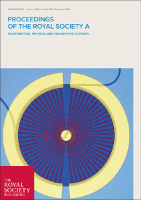
PROCEEDINGS OF THE ROYAL SOCIETY A-MATHEMATICAL PHYSICAL AND ENGINEERING SCIENCES
Pioneering Discoveries in Mathematics, Engineering, and Physics.PROCEEDINGS OF THE ROYAL SOCIETY A-MATHEMATICAL PHYSICAL AND ENGINEERING SCIENCES is a prestigious academic journal published by the Royal Society in the United Kingdom, dedicated to the dissemination of high-quality research in the fields of Mathematics, Engineering, and Physics. With an esteemed impact factor and ranked in the top quartiles (Q1) across various categories, this journal stands out as a leading source of innovative findings and critical discussions within the global scientific community. Researchers benefit from its comprehensive coverage that spans from theoretical explorations to practical applications, and the journal plays a crucial role in advancing knowledge and fostering interdisciplinary collaboration. Although it does not currently offer Open Access options, its influence is underscored by notable Scopus rankings, evidencing its significant contribution to the fields it represents. Located at 6-9 Carlton House Terrace, London SW1Y 5AG, England, the journal continues to be a cornerstone for scholars seeking to publish impactful research and stay informed on the latest advancements in science and engineering.

Physical Review Fluids
Innovating Research in Flow and TransferPhysical Review Fluids is an esteemed journal published by the American Physical Society, focusing on the intricate and essential field of fluid dynamics. With an impressive Q1 ranking in categories such as Computational Mechanics, Fluid Flow and Transfer Processes, and Modeling and Simulation, this journal serves as a pivotal resource for researchers and professionals seeking to disseminate high-quality and innovative research findings. The journal's scope encompasses a broad spectrum of topics within fluid mechanics, promoting advancements in theoretical, computational, and experimental methodologies. Although it is not an open-access journal, its publications are critically well-received, underpinned by its strong standing in the Scopus rankings which place it in the top percentiles across various relevant fields. Physical Review Fluids has been a foundational platform for scholars to share their discoveries from 2016 through 2024, making it an indispensable asset in the ongoing evolution of fluid dynamics research.
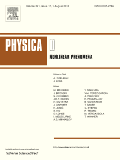
PHYSICA D-NONLINEAR PHENOMENA
Illuminating the Path of Nonlinear Scientific DiscoveryPHYSICA D-NONLINEAR PHENOMENA, published by Elsevier, serves as a leading academic journal at the forefront of the fields of Applied Mathematics, Condensed Matter Physics, Mathematical Physics, and Statistical and Nonlinear Physics. With an impressive track record since its inception in 1980, this journal has maintained a distinguished presence, noted for its Q1 ranking in multiple categories in 2023, showcasing its impact and relevance in the scientific community. The journal's commitment to advancing knowledge is reflected not only in its rigorous peer-reviewed articles but also through its high visibility and accessibility, aiding researchers, professionals, and students in staying abreast of the latest developments in nonlinear phenomena. Located in Amsterdam, Netherlands, PHYSICA D-NONLINEAR PHENOMENA is essential for those seeking to explore innovative research and contribute to groundbreaking discoveries in the realm of nonlinear dynamics.

Applications of Mathematics
Connecting Mathematics to Practical ChallengesApplications of Mathematics, published by SpringerNature, is a respected journal based in the Netherlands that provides a platform for innovative research in the field of applied mathematics. Since its inception in 1997 and with a convergence ongoing until 2024, the journal supports the dissemination of high-quality scholarship, although it currently holds a Q4 category ranking in the applied mathematics category, which reflects its niche importance in the academic community. Researchers and professionals in the field can access a diverse array of applied mathematical techniques and their practical applications, contributing to advancements across various disciplines. While the journal does not operate under an open access model, it is indexed and ranked in Scopus, where it holds a rank of 419 out of 635, placing it in the 34th percentile. This underscores its value and relevance in the global research landscape.
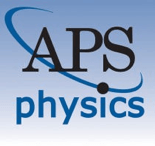
REVIEWS OF MODERN PHYSICS
Connecting Ideas and Discoveries in PhysicsREVIEWS OF MODERN PHYSICS, published by the American Physical Society, stands as a premier journal in the field of physics and astronomy, evidenced by its esteemed Q1 ranking in the 2023 category. With a notable ISSN of 0034-6861 and E-ISSN of 1539-0756, this journal has been a cornerstone for scholarly excellence since its inception in 1929. Operating from the heart of the United States at One Physics Eklipse, College Park, MD 20740-3844, REVIEWS OF MODERN PHYSICS enjoys a significant reputation, holding a top rank of #1 out of 243 in the Scopus rankings for General Physics and Astronomy, and securing its place in the 99th percentile. While it does not provide open access, the journal remains a critical resource for researchers and students alike, offering comprehensive reviews and breakthroughs that drive innovation and understanding in modern physics. As it converges towards its centennial year in 2024, the journal continues to foster significant academic discourse, making it an invaluable platform for the dissemination of pioneering ideas and research outcomes.
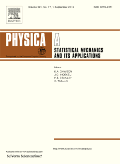
PHYSICA A-STATISTICAL MECHANICS AND ITS APPLICATIONS
Fostering Insights into the Interplay of Probability and Physics.PHYSICA A-STATISTICAL MECHANICS AND ITS APPLICATIONS, published by Elsevier, is a prestigious journal that has been at the forefront of statistical mechanics, condensed matter physics, and applications thereof since its inception in 1975. With an ISSN of 0378-4371 and an E-ISSN of 1873-2119, this journal serves as a critical platform for researchers, professionals, and students who seek to explore the intricate interplay between statistical theories and real-world applications. PHYSICA A boasts an impressive impact factor and has consistently maintained a strong academic standing, ranking in the Q2 quartile in several categories, including Condensed Matter Physics and Statistical and Nonlinear Physics, based on the latest 2023 Scopus rankings. Researchers can access high-quality, peer-reviewed articles that contribute to the advancement of knowledge in the field while addressing complex challenges in statistics and probability. For those engaged in the evolving landscape of physics, this journal offers indispensable insights and a robust collection of influential research, affirming its importance as a cornerstone of reference material in statistical mechanics.

ACTA PHYSICA POLONICA B
Fostering Scientific Discourse Since 1980ACTA PHYSICA POLONICA B is a distinguished journal published by Jagiellonian University Press, based in Poland. This peer-reviewed publication focuses on advancing the field of Physics and Astronomy with a mission to disseminate high-quality research that spans various subfields and interdisciplinary connections. Since its inception in 1980, the journal has steadily become a reliable source of scientific discourse, continuing its commitment through 2024. With a Q3 rank in the Physics and Astronomy category, it stands as an important resource for both established and budding researchers, contributing to a deeper understanding of complex physical phenomena. The journal is indexed by Scopus, ensuring a broad reach within the academic community, although it is not classified as an open-access resource. By promoting rigorous scientific inquiry and fostering connections within the global academic landscape, ACTA PHYSICA POLONICA B plays a vital role in shaping the future of physics research.